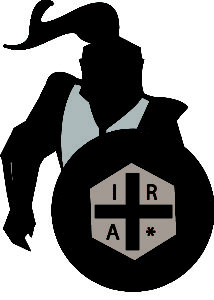Transferring Real Estate to Heirs, Part 3
One of the more frequent estate planning conversations we hear centers upon the transfer of real estate from a person to his-or-her heirs (usually children). This is the third in a series of posts reviewing some general information on doing that. As we are typically talking about “the house”, this post will refer to “your house”, but everything here applies to any real estate.
In the last post we considered what happens to property that you own outright (as opposed to having a life estate, joint tenancy with survivorship, etc.) at your death. So we talked about leaving property to others through your will (called a “devise”), and we talked about what happens if you have no will.
1. Transfer to/through a Living Trust. You can establish a Revocable Living Trust, and then draft a deed transferring your house (or any other real estate and most other types of assets) to the Trust. Any property owned by the Trust when you pass away avoids probate. The Trust Agreement will then control what happens to the house (or anything else) when you pass away. The options are virtually limitless. You could have the trust distribute the house to one or more persons, or hold it in further trust and allow someone to live in the house. Or it could direct the trustee to sell the house and pay the net proceeds to one or more people/organizations. If the trust is property drafted, it will protect the house from your beneficiary’s creditors and unhappy spouses. (This sort of trust will NOT protect the house from your creditors.) Note: Unlike some other states, it is NOT enough merely to draft a trust agreement that mentions the house or a declaration of trust. In North Carolina, there MUST be an ACTUAL DEED that transfers the house into the Trust.
PROS:
• During your lifetime you are free to do anything you like.
• You decide who gets your house, subject to certain claims of creditors, maybe your spouse, etc.
• Your heirs (beneficiaries) get a step-up in tax basis when they inherit the house.
• If your heirs (beneficiaries) are your spouse or children and there is a mortgage on the house when you die, they don’t have to pay off the mortgage immediately, and they do not have to assume it; but they do have to keep it current.
• The house is protected from most of the creditors of your beneficiaries (if trust agreement is properly drafted).
• The house is protected from the unhappy spouses of your beneficiaries (if trust agreement is properly drafted).
• There is generally almost zero risk of litigation (if trust agreement is properly drafted).
• Very economical and easy after your death.
• It is a private arrangement, as opposed to probate, which is public.
• If there are to be multiple beneficiaries and you anticipate that they may not get along, this allows the Trustee to deal with the property without the necessity of forging agreements.
• Lends itself well to complex arrangements (if such are needed).
• Allows for genuine long-term control of the property after you pass away.
• You can transfer mortgaged property to your Trust without the approval of the mortgage company.
• If you are married, North Carolina law now allows you to maintain the protections of TbyE even though you have transferred the property to your Trust.
CONS:
• Subject to the claims of your creditors.
• The initial cost will be higher than for a will or a deed, though the long-run cost will likely be less than the use of a will.
• If poorly done, it can really make a mess of things.
2. Transfer to/through an Irrevocable Trust. You could establish an Irrevocable Trust, and then draft a deed transferring your house (or any other real estate and most other types of assets) to the Trust. There are many different sorts of Irrevocable Trusts and they vary greatly. But as a general rule, one big “pro” will be added to the list of “pros” for a Living Trust. It is this: that as a general matter the property in the Trust IS protected from your creditors. (There are some important exceptions to this.) But all good things come at a price, and the price here is a big “con” that is added to the list of “cons” for a Living Trust. It is this: loss of control. That is right, once you transfer property to an irrevocable trust there is NO getting it back. And there is a second con: since the ability to modify an irrevocable trust is quite restricted, if it is not done right the first time there may well be no fixing it.
3. Transfer to/through an LLC or Corporation. Many of our clients own rental or business real estate in an LLC or a Corporation. So the name on the deed is not a person, but is the name of an LLC or Corporation. This means that the specific piece of real estate is not an asset to leave to someone, because it is owned by the LLC or Corporation. But your interest in the LLC or Corporation IS AN ASSET that you leave to your heirs. They do get a step-up in basis in the value of the LLC or Corporation upon your passing. If there is concern that the prospective heirs won’t get along, you can make the LLC subject to an Operating Agreement (or the shares in the Corporation subject to a Shareholders’ Agreement) to facilitate the smooth transition. If you have a Trust, and you have transferred ownership (or equitable ownership) to the Trust, and the Trust is properly drafted, this should not be an issue.
On a related note: The setting up of Partnerships to own real estate used to be quite common. (LLC law was relatively undeveloped and many did not think the LLC a credible option. Also, and this may be a surprise to you, but attorneys as a group tend to be creatures of habit and are rather biased against new things.) We still see quite a few Partnerships. Upon a quick glance, Partnerships can look like an LLC (they share the trait that they don’t pay taxes but pass profit and loss directly to the owners to pay the tax). But Partnerships are not the same as LLCs. Partnerships are very prone to big and expensive problems when a partner dies. If you have one in NC, and can’t explain why it should be a Partnership and not an LLC, come talk to us. (Some states do not give LLCs favorable tax treatment, and the level of protection provided by an LLC varies greatly between states. If you are not in NC, talk to someone in your state about your needs.)
As always, this conversation is of a general nature and is NOT A SUBSTITUTE for coming in and discussing YOUR PARTICULAR SITUATION with us. We will offer you coffee, and we rarely bite. Also, this conversation is based on North Carolina law at the time it was written, and assumes that both you and the real estate in question are in North Carolina. Mobile homes can cause additional complications that are not addressed here. Next time, we will discuss life estates. Until then…


